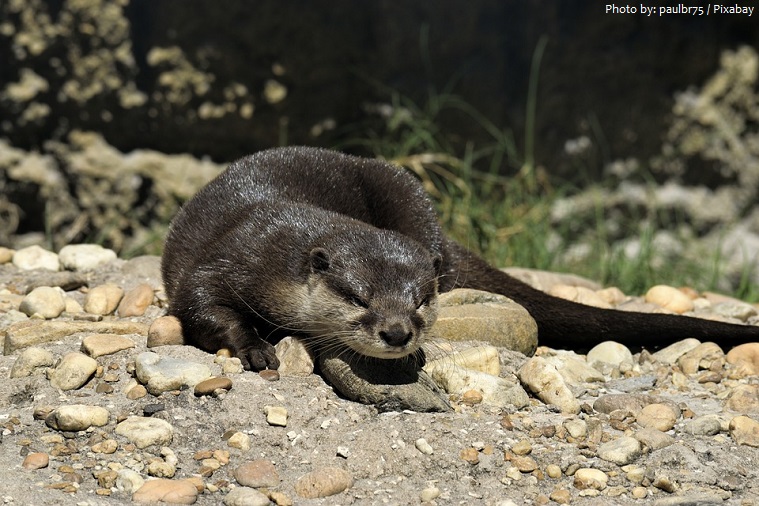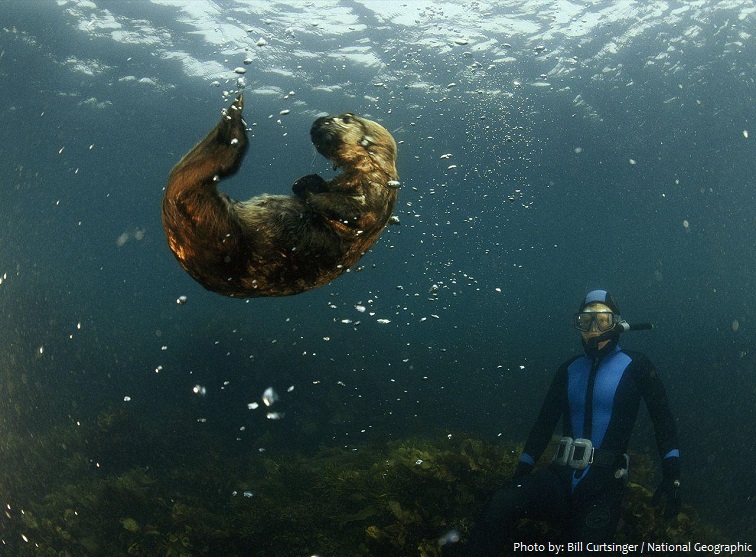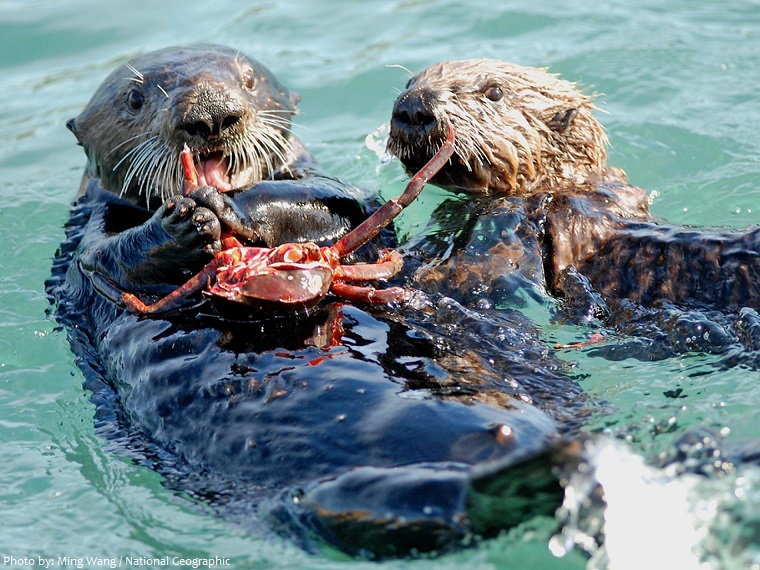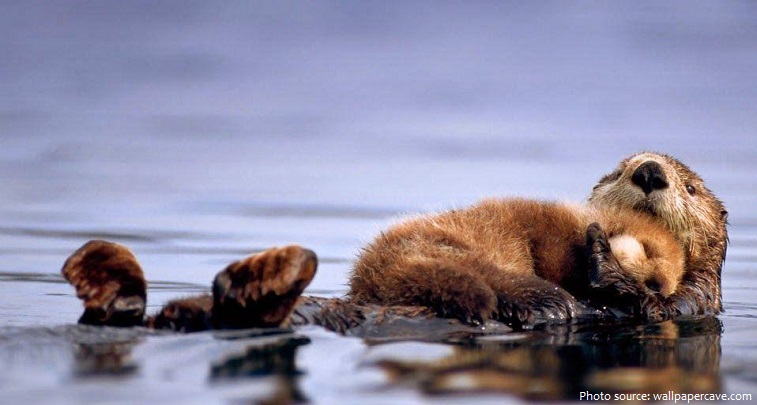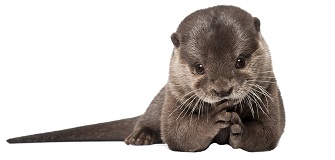The sea otter (Enhydra lutris) is rare, completely marine otter.
It is native to the coasts of the northern and eastern North Pacific Ocean.
Sea otters inhabit temperate coastal waters with rocky or soft sediment ocean bottom. They live in offshore forests of giant kelp (Macrocystis pyrifera), and spend most of their active time foraging below the canopy.
In the wild, sea otters live to a maximum age of 23 years, with average lifespans of 10–15 years for males and 15–20 years for females.
The sea otter is one of the smallest marine mammal species, but it is the heaviest member of the weasel family.
Sea otters are from 1 to 1.5 meters (3.3 to 4.9 feet) in length and typically weigh between 14 and 45 kilograms (31 and 99 lb).
The tail comprises less than a third of the body length and is slightly flattened, and muscular; the large hind feet are broad and flipperlike.
The coloration of the pelage is usually deep brown with silver-gray speckles, but it can range from yellowish or grayish brown to almost black. In adults, the head, throat, and chest are lighter in color than the rest of the body.
Unlike most other marine mammals, the sea otter has no blubber and relies on its exceptionally thick fur to keep warm. With up to 150,000 strands of hair per square centimetre (nearly one million per square inch), its fur is the densest of any animal.
Sea otters are quite awkward on land, and spend the majority of their lives in the water.
Sea otters spend a great deal of time floating on their backs at the surface. They move by paddling their hind limbs and sculling with their tails. For rapid swimming and for diving, they swim similarly to other otters, using up-and-down undulations of the body.
Sea otters can reach speeds of 1.5 km/h (0.9 mph) on the surface and 9 km/h (5.6 mph) while diving.
Sea otters generally forage close to shore in depths shallower than 18 meters (60 feet) but are capable of diving to depths of 90 meters (300 feet) or more.
With a relatively large lung capacity for it’s size, a sea otter can hold its breath for 5 minutes, but most dives are two minutes or less in duration.
When resting or sleeping, sea otters float on their back and wrap themselves in kelp to keep from drifting.
Sea otters eat clams, mollusks, crabs, snails, starfish, abalone, and many other marine animals (overall about 100 species) .
Floating on its back, it opens mollusks and other shells by smashing them on a stone balanced on its chest; it is one of the few mammal species to use tools.
Sea otters are social, and tend to congregate in groups of gender, with pups and females in a group and males in another group. Females tend to stay away from males except when mating.
Sea otters communicate through body contact and vocalizations, although they are not overly vocal.
Although concentrated in June, some breeding occurs in all months; most births occur in summer. The single pup (twins are rare) may be born ashore or at sea and is nursed 6 to 12 months. Pups are carried on the female’s chest as she swims belly up. Mothers have been observed to lick and fluff a newborn for hours; after grooming, the pup’s fur retains so much air, the pup floats like a cork and cannot dive.
Predators of this species include orcas, great white sharks and sea lions; bald eagles may grab pups from the surface of the water. On land, young sea otters may face attack from bears and coyotes.
Their beautiful fur is a main target for many hunters.
Sea otters, whose numbers were once estimated at 150,000 to 300,000, were hunted extensively for their beautiful fur between 1741 and 1911, and the world population fell to 1,000 to 2,000 individuals living in a fraction of their historic range.
Archaeological evidence indicates that for thousands of years, indigenous peoples have hunted sea otters for food and fur.
The sea otter is classified as an endangered species.
Sea otters can do well in captivity, and are featured in over 40 public aquariums and zoos.


